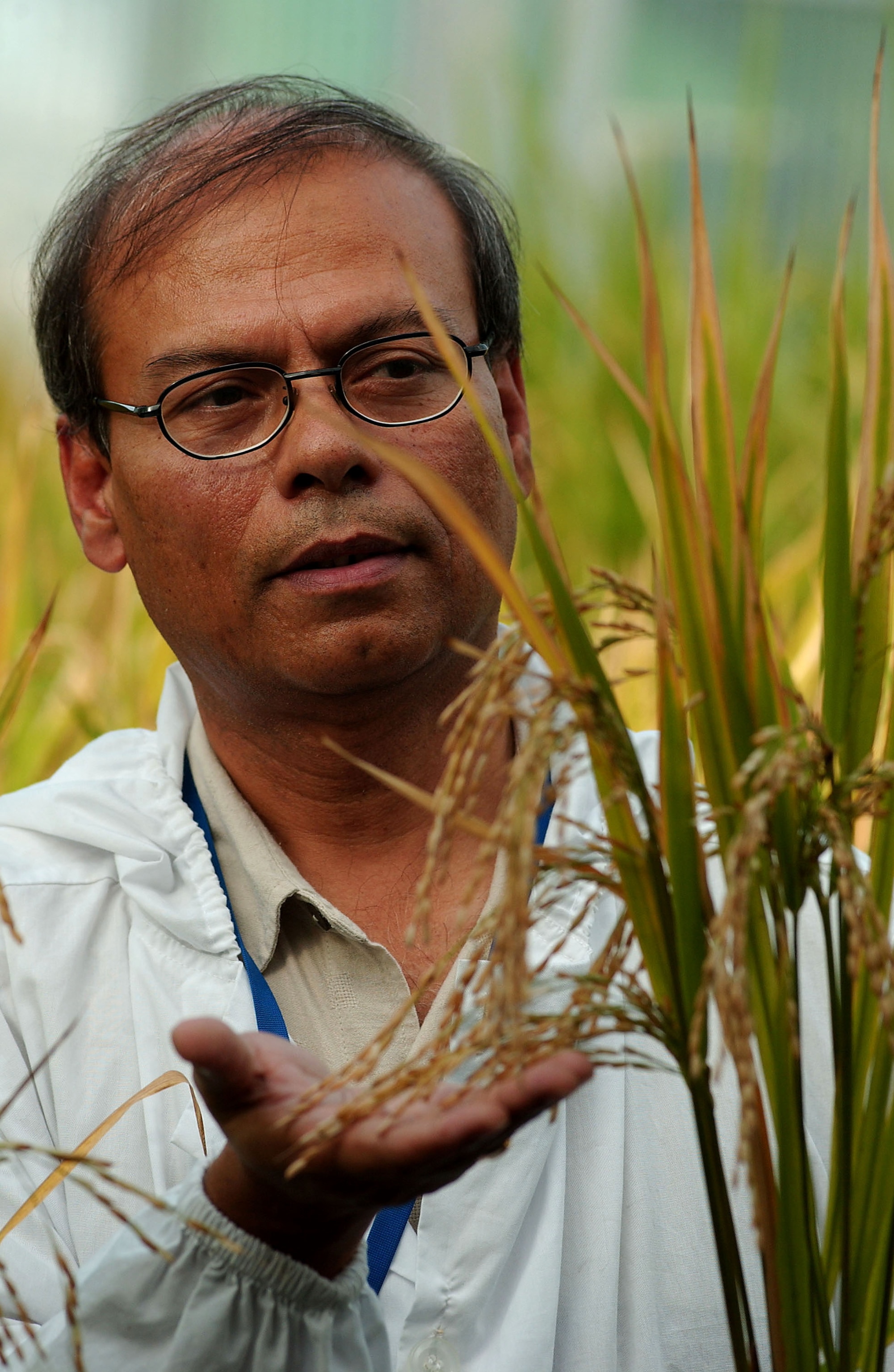
Why Micronutrient Deficiency Is a Macro-Problem
When we think about food, most of us are mulling over what nutritionists call macronutrients: proteins, lipids, and carbohydrates—respectively, the prime constituents of T-bone steak, butter, and spaghetti. What with close to a billion people in the world suffering from hunger, macronutrients are on our minds.
Equally important, however, are micronutrients—food constituents that we only need in tiny pinches, but that nonetheless are essential for our health and survival. And the problem is that a lot of us aren’t getting enough of them. A recent report from the Global Alliance for Improved Nutrition (GAIN) points out that micronutrient deficiency is a macro-problem.
Micronutrients, generally lumped together as “vitamins and minerals,” are a minuscule, but important, bunch of chemicals that include – among others – iodine, iron, zinc, folic acid, calcium, magnesium, and vitamins A, C, D, and E. Worldwide, researchers estimate that over 2 billion people suffer from micronutrient deficiencies, a condition referred to as “hidden hunger,” since victims often are subsisting on diets of starchy staples that provide them with needed calories but deprive them of adequate nutrition. In other words, you may not necessarily feel hungry, but you really—dangerously—are.
Hidden hunger is an insidious and often under-the-radar condition, leading to susceptibility to disease, increased childhood mortality, stunted growth, cognitive impairment, and lousy economic productivity. According to the GAIN report, hidden hunger may be the evil genius that condemns entire societies to seemingly unbreakable cycles of poverty.

Though hot spots for hidden hunger are India, Afghanistan, and developing countries in sub-Saharan Africa and south-central and southeast Asia, industrialized countries aren’t immune. Results of a 2015 study in the Journal of the American College of Nutrition suggest that a corollary of the current American obesity epidemic may be micronutrient deficiencies. In other words, hidden hunger may be a factor in cranking up our national health costs—now upwards of $3 trillion a year—and may also play a part in our less-than-solid economy and our failing public schools.
Author Richard Carlson’s famously comforting Don’t Sweat the Small Stuff just doesn’t apply when it comes to micro-nutrition. Take iodine, a key component of thyroid hormones, which in turn are essential for normal growth and neurological development. We don’t need much iodine to do the trick—the recommended adult daily allowance is a piddling 150 micrograms per day—but, globally, it’s one of the main causes of impaired cognitive development in kids. According to the World Health Organization, 18 million babies a year are born mentally impaired because of iodine deficiency. Maternal iodine deficiency during pregnancy can result in stillbirths, spontaneous abortions, or, in extreme cases, congenital abnormalities such as cretinism.
Despite these unhappy statistics, iodine is still one of the world’s nutritional success stories. The solution was fortification of salt. Iodized salt, though adopted in Switzerland and the United States in the 1920s, only became a global initiative in the 1990s when WHO recommended it as a safe and cheap strategy for treating the estimated two billion people afflicted by iodine deficiency disorders (IDD). Today about 75 percent of the world’s population has access to iodized salt; and researchers predict that we’re well on the way to eradicating IDD, a public health achievement on par with the elimination of smallpox and polio.
The world’s most common micronutrient deficiency today, according to WHO, is iron deficiency anemia, a condition that affects about 50 percent of pregnant women and 40 percent of preschoolers in developing countries, and in all about 30 percent of the world’s population—a total of over 2 billion people. Iron deficiency is a relentlessly debilitating but frequently unrecognized disease, since its effects are often long-term and subtle. Among these are impeded physical and cognitive development, depression and fatigue, poor school and work performance, and premature death.
Eighty-two countries now have legislation in place mandating fortification of staples such as wheat and corn flour with iron and other micronutrients—including folic acid, a lack of which during pregnancy can lead to the devastating neural tube defect known as spina bifuda. Today about 30 percent of the world’s wheat flour is fortified; and preliminary studies indicate a 30 to 50 percent reduction in anemia in those using it, as well as a 25 percent reduction in incidences of spina bifuda.
Another micronutrient problem of global scope is Vitamin A deficiency (VAD), today the leading cause of preventable blindness in children. Worldwide, about 250 million kids are Vitamin A deficient; of these, 250,000 to 500,000 become blind each year and about half of whom die. VAD also so weakens the immune system that millions of its victims die each year of diseases that ordinarily would not have been fatal. To combat VAD, about 20 countries have mandated fortification of common cooking oils with Vitamin A, and though still in its early stages, the program is showing signs of limited success.
The GAIN report focuses on food fortification—that is, the supplementation of commonly available staple foods such as salt, flours, and oils with essential micronutrients. What it doesn’t mention is the touchy, if not positively incendiary, question of GMOs.
One of the most promising solutions to the world’s Vitamin A deficiency crisis is Golden Rice, a genetically-modified breed of rice originally developed by the non-profit International Rice Research Institute, headquartered in the Philippines. Golden Rice is golden—or, at least, bright yellow—because it contains switched-on genes for the manufacture of beta-carotene, which our bodies use to manufacture Vitamin A. In the best of circumstances, we get our beta-carotene from fruits and vegetables—carrots, kale, spinach, squash, apricots, plums, peppers—but such a solution usually isn’t an option for the world’s poor. A single bowl of the latest permutation of Golden Rice, on the other hand, provides 60 percent of a child’s daily requirement of Vitamin A.
The scientific consensus is that genetically modified crops such as Golden Rice are safe and effective, and it’s unfortunate, if not tragic, that fear-mongering and misinformation have put the brakes on this potential fix for VAD.
Because for the macro-problem of micronutrients, the world needs all the help it can get.








